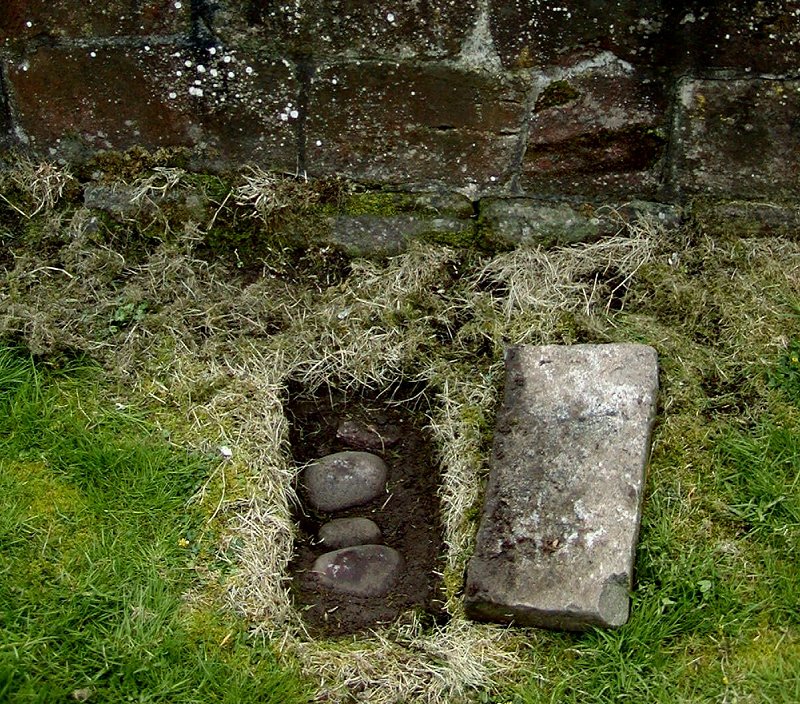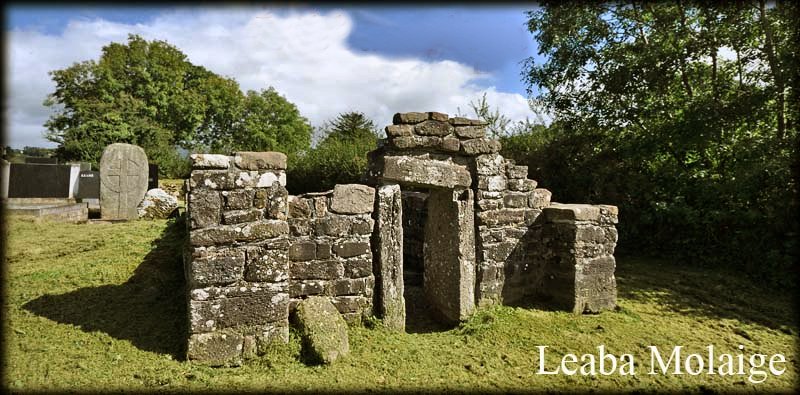
Labbamolaga, county Cork
R 763 176 - Sheet 73
Nearest town: Mitchelstown
The "cursing-stones" of the early (probably pre-) Christian site,
now hidden under a slab.
They were known locally as the Clocha Mealachta or 'Stones of Rebuke'.

There is also St Molaga's Well (hidden in a tangle) which
was, of course, part of the turas ('pattern' or ritual round)
which was held on Easter Sunday.
Inside the small church is the Leaba, "... a
kind of kist, consisting of a large flagstone resting on
low side stones, and leaving an open space beneath, said to have been the bed
of the Saint.
This is nearly wide enough to permit a person to stretch on the ground in immediate
contact with the flagstone above.
|
The Story of Saint
Mo-Laga His parents were reputed to be very
old when he was born some time in the seventh century. (This is a sign
of specialness, so on his birth it was predicted that he would achieve
greatness.) The four [or more] pillars of stone adjacent to the monastic site "probably mark the burial place of some noble prince of pagan heritage who lived in Mologa's time, showing the saint's courage in coming to live among a Pagan race" - though, as already mentioned, Ireland should have been throughly Christianised at this time. Another tale has it that four men robbed the monastery and, as one of them stooped to pick up a dropped chalice, he was turned into a pillar of stone "as can be seen from the stoopedness of one of the pillars". Presumably the others are the petrification of his unstooped fellows. According to tradition there is also a skull in the graveyard, which, although buried several times, has repeatedly resurfaced - a reversal of the present state/behaviour of the Clocha Mealachta. Interestingly also, St Molaga has an association with bees - like St Gobnait of Ballyvourney (also in county Cork) who is very obviously a Christianised female deity.
|

for more
pictures see Jim Dempsey's Megalithic
Ireland website,
from which this photo has been taken.
<<BACK<<